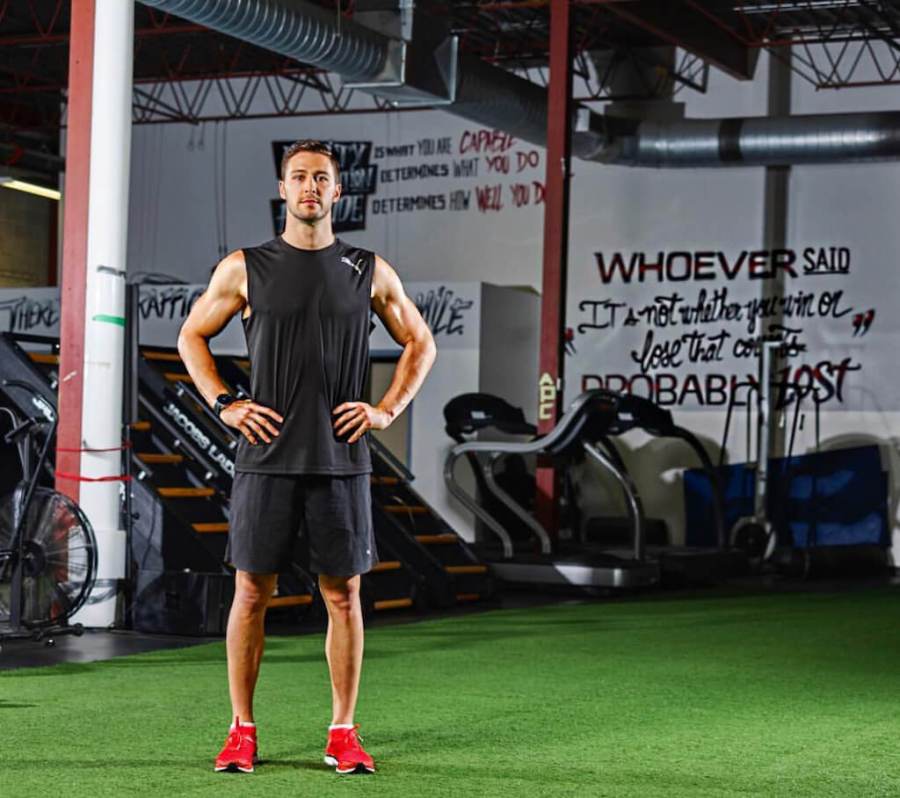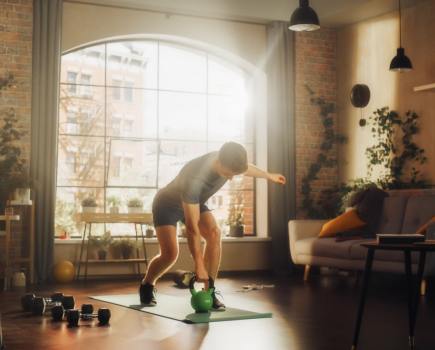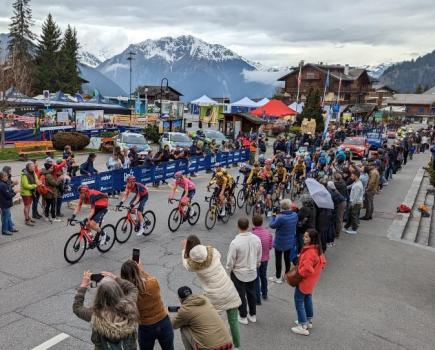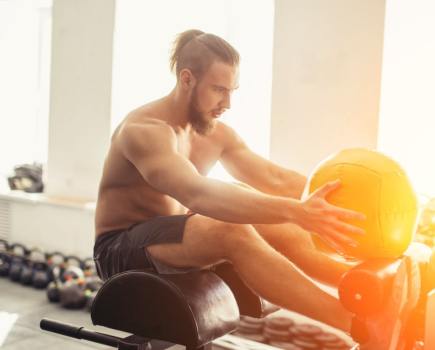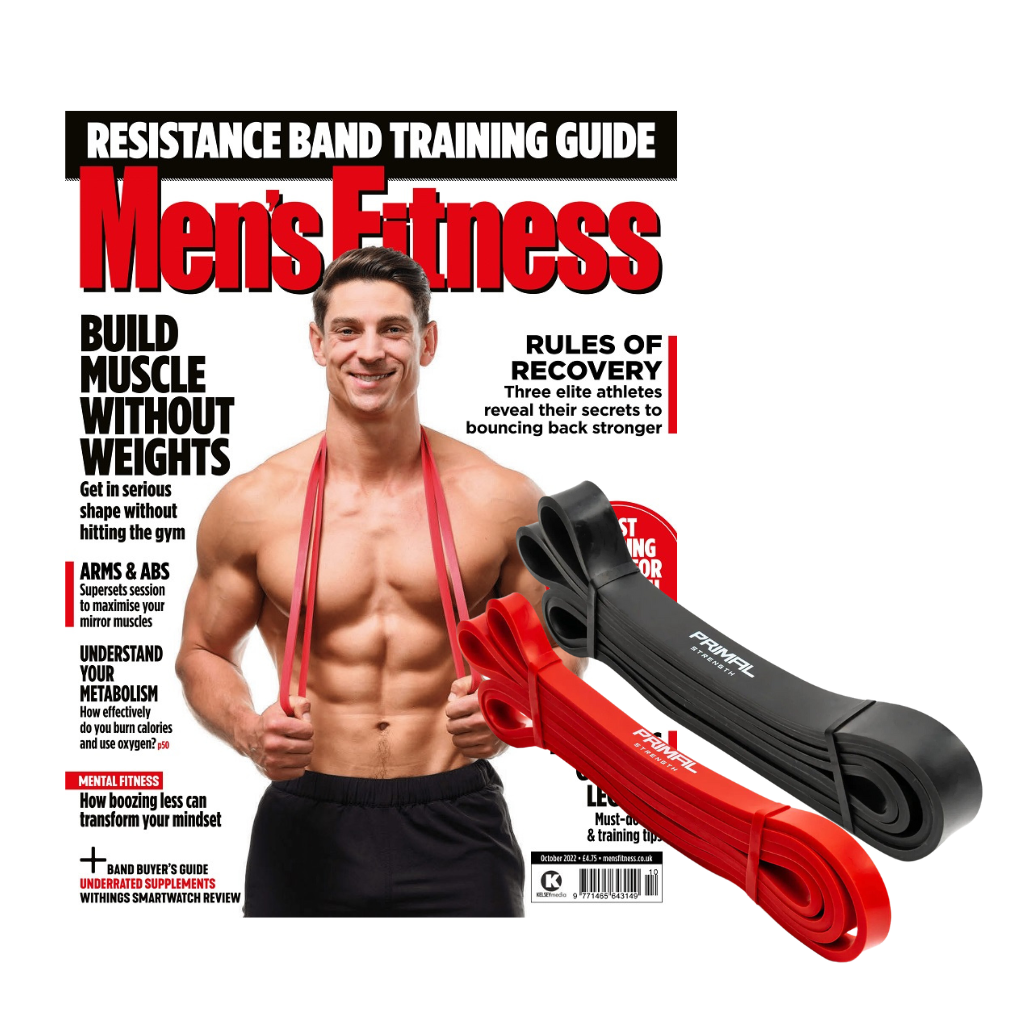As a renowned performance coach to McLaren F1 driver Daniel Ricciardo, Michael Italiano knows a thing or two about elite level fitness training.
For the past three years Italiano has devised specific training programs for Ricciardo, tailoring sessions to target the muscles he uses most and advising him on how to physically manage the ebbs and flows of the Formula 1 season.
Away from the F1 circuit, Italiano is now offering his strength and conditioning expertise to clients via his MI Coaching platform.
“I’m looking at new ways of encouraging individuals to train efficiently and make incremental lifestyle changes,” he says.
“The easiest way to achieve your dream health is not by focusing on looking good, but by making it simpler for you to pick up sustainable and healthier habits. Health is so much more than just looking good, it’s about preventing injury and diseases, improving your mental health, feeling happier, developing positive behaviours and building your self-confidence.”
Users of his training platform receive programmes of differing durations and intensity designed around their schedule and home set up.
“The idea is to break the mould of traditional coaching to make my client’s transition into a healthier lifestyle that is fun, simple, and accessible,” he says.
What, then, can a man who trains racing drivers at the pinnacle of their sport transfer into routines the rest of us can benefit from?
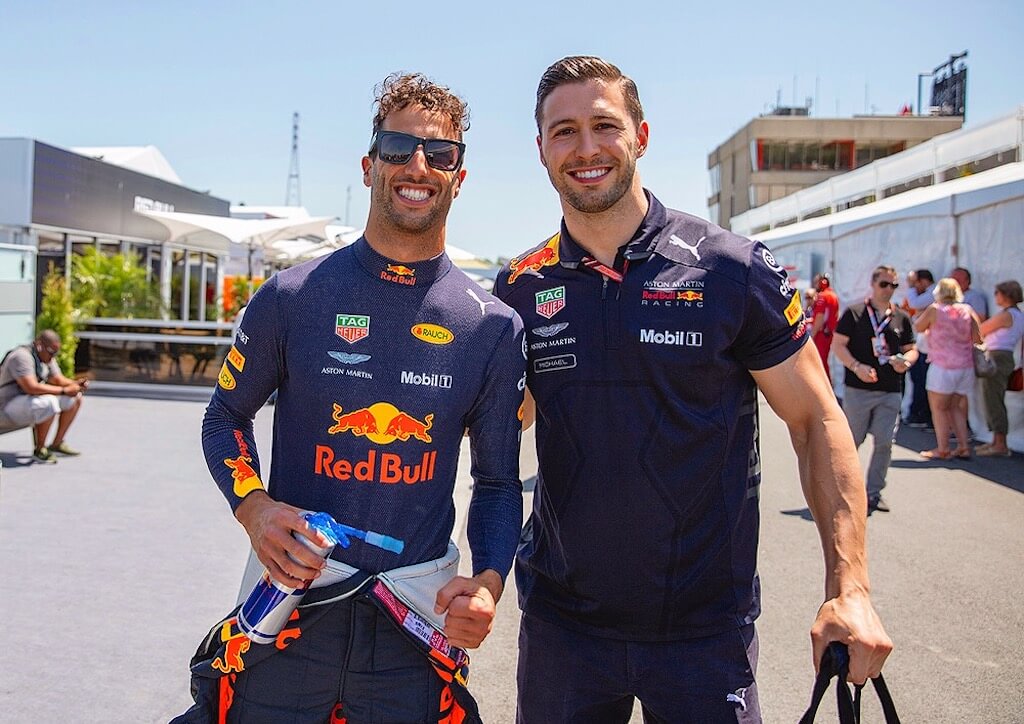
Michael Italiano (right) with Daniel Ricciardo
Men’s Fitness: Michael, what are the key areas of functional training you need to work in a sport as unique at F1?
Michael Italiano: It’s true it’s not as relatable as, say, football training, but some of the training principles are uniform across all sports. With F1 an obvious area of difference is neck strength. Drivers have to withstand a lot of G-force, so we do loads of neck work using something called a GS harness. We’ll do this every second day, throughout the season – training the neck muscles to manage the load.
What people probably don’t realise is that drivers have to work really hard on their calves. The brake pressure in these cars is such that you’re having to slam the brakes, constantly, for two hours. The calf muscles have to be strong and very well-conditioned, because the last thing you want at 300km/h is calf cramp. On a heavy breaking circuit like Singapore, the calves get really sore and tight, so you need a lot of muscular endurance.
MF: So it’s not so much the driving as the braking that’s most demanding on the body?
MI: Absolutely, and because of the demands of braking the key area we work on is the posterior chain. All that force is going through your calves, hamstrings, glutes, your QLs (quadratus lumborum, or deep abdominals) and a lot of your core is taking a load as well. It’s one of those principles that transfers from F1 to all sports: if you want to be an amazing athlete, have a strong posterior chain.
MF: What drills are you putting Daniel Ricciardio through to achieve that strong chain?
MI: The key compound movements. A lot of deadlifting. A lot of bench press, because even though they have power steering, there is still a sense of strength they need within their anterior delts. A lot of Nordic hamstring curls and eccentric loading on the hamstrings, and a lot of isolated glute exercises as well.
MF: How are you targeting the calves and neck?
MI: We do a lot of single-leg weighted calf raises. The calves get trained through that posterior chain work, too. For the neck, we put a harness on Daniel and I’ve got a handle on the other side, pretty much pulling it to provide the resistance. We have a measuring device that clips onto this resistance band telling me when I’m pulling 10kg or 15kg, say. On some circuits the drivers will experience up to six G – equivalent to a 45kg load on the neck.
MF: How often are you working with Daniel through the season?
MI: During the race season it’s all about maintenance. Pre-season is where we hit our KPIs (key performance indicators), try to beat our PBs and really go hard and set that early race fitness.
Then throughout the season, because the calendar is so brutal with so many races, the emphasis is all about recovery, sleep, massage, dynamic stretching – making sure he’s not stiffening up and just maintaining that fitness level.
MF: How do you speed up race recovery, including jet lag?
MI: We’ve found that a lot of little things can go a long way. Three years ago I bought Daniel a travel pillow, because I noticed that hotel pillows were stiffening up his neck, which was not ideal for a racing driver.
We also use lavender spray to aid sleep, and create a subliminal association and consistency between home and the hotel room that’s really good for the body. We upgraded the eye masks to real premium Manta Sleep ones, too.
As for jet lag, we do a lot of things with blue light glasses, light optimisation lamps, caffeine timing and exercise timing, to get the circadian rhythms in balance quicky. Any marginal gains are invaluable when you’re working in thousandth of seconds.
MF: How big a role does hydration plan in keeping drivers physically and mentally sharp?
MI: Thermal regulation – the body’s ability to maintain its core body temperature – is a massive part of the sport, because it’s very difficult to achieve it in the cockpit of an F1 wearing a fire-resistant suit. These guys are excessively sweating, so we have to ensure that they don’t dehydrate – which would affect performance with possibly devastating impact.
We have hydration protocols week in week out with Daniel, ensuring he uses electrolyte powders to make sure he retains water efficiently, and making sure he’s fully hydration with liquids and fruits etc. at least 48 hours before the start. And I gave him a urine colour rating – from 1 to 5 – which he uses to access his state of hydration daily.
MF: Finally, you’re bringing the training you do with Daniel to regular clients via your MI package – how do you bring the nuanced elements of F1 driver training to everyday fitness?
MI: Many of those simple habits – working the posterior chain, good hydration, eating a rainbow of vegetables, sleeping well etc. – will work for the average Joe, and have the same positive impact as with F1 drivers and pro athletes.
The key thing for me is that clients don’t underestimate the effectiveness of online coaching. During Covid I was in the UK, Daniel was in LA, so we had to adopt online training, but he still beat every PB that he’d set the year before. That was a great reassurance that these programmes can really work online.
Michael Italiano is the founder of MI Coaching the online coaching platform giving you access to elite level performance training.
Words: Rob Kemp

